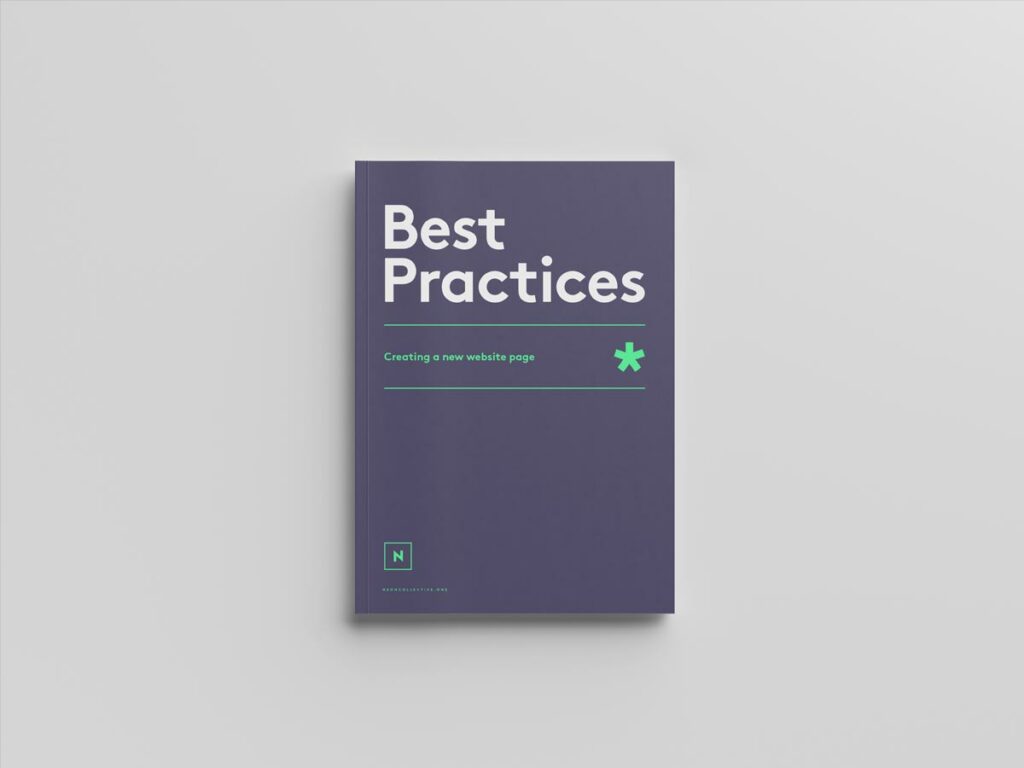Best Practices
Best Practices for Creating a High-Performing Web Page

When it comes to building a new web page, ensuring that it aligns with best practices is essential for delivering a successful user experience and maximising its impact. In this article, we'll explore the core fundamentals for creating a new web page that excels in both design and functionality.
1. Overview
Before diving into the nitty-gritty details, it’s essential to start with a clear overview of what the web page is all about. Outline the purpose and goal of the page, ensuring that it aligns with your website’s overall objectives. A well-defined overview sets the direction for the rest of the content and design elements.
2. Key Objectives
Identify the key objectives you wish to achieve with the new web page. Whether it’s driving sales, generating leads, or providing valuable information, having specific objectives will help guide your decisions throughout the development process. Keep these objectives at the forefront and design the page to meet these goals effectively.
3. Target Audience
Knowing your target audience is crucial for creating a web page that resonates with users. Understand their needs, preferences, and pain points. This knowledge will influence your content, design choices, and calls-to-action, ensuring that the page speaks directly to your intended audience.
4. Content Guidelines
Content is the backbone of any web page, and adhering to specific guidelines will enhance its impact:
Clarity and Conciseness: Ensure that your content is clear, concise, and easy to understand. Avoid jargon and unnecessary complexity.
Use Headings and Subheadings: Organise your content with descriptive headings and subheadings. This enhances readability and helps users find the information they need quickly.
Keyword Research: Perform keyword research to identify relevant terms that align with your page’s topic. Incorporate these keywords naturally into your content for better search engine visibility.
Engaging Media: Integrate high-quality images, videos, and interactive elements to enrich the user experience. Visual content can captivate visitors and keep them engaged with your page.
Call-to-Action (CTA): Include a clear and compelling CTA that prompts users to take specific actions, such as making a purchase or signing up for a newsletter.
Links: Add internal and external links strategically to direct users to related content or authoritative sources.
Mobile Responsiveness: Ensure your web page is fully responsive and displays correctly on various devices, from desktops to smartphones.
Proofreading: Thoroughly proofread your content to eliminate grammatical errors, spelling mistakes, and typos. Professional and error-free content enhances your credibility.
Consistent Branding: Maintain a consistent brand identity throughout the page. Use the same logo, colors, and typography that align with your website’s overall branding.
5. Design Guidelines
An eye-catching and user-friendly design is crucial for creating a positive impression on visitors:
Layout: Create a clean and intuitive layout that guides users through the page’s content logically. Avoid clutter and maintain visual hierarchy.
Whitespace: Utilise ample whitespace to give your content room to breathe. It enhances readability and helps draw attention to important elements.
Font Selection: Choose legible fonts that complement your website’s design and are easy to read on various devices.
Colour Scheme: Select a harmonious colour scheme that aligns with your brand. Colours can evoke emotions and impact how users perceive your content.
Images and Graphics: Use high-quality images and graphics that complement your content and engage users. Optimise images for fast loading times.
Consistency: Ensure that the design of your web page is consistent with the rest of your website. A consistent look and feel enhance your brand identity and user experience.
6. SEO Best Practices
To improve your web page’s visibility in search engines, consider the following SEO best practices:
Meta Title and Description: Optimise the meta title and description with relevant keywords to entice users to click on your page in search results.
URL Structure: Create a clean and descriptive URL that includes essential keywords for better search engine indexing.
Image Alt Tags: Use descriptive alt tags for images to improve accessibility and provide search engines with context about your visuals.
Header Tags: Structure your content with header tags (H1, H2, H3, etc.) to indicate the hierarchy of information.
XML Sitemap: Include your web page in the website’s XML sitemap to ensure that search engines can discover and index it.
7. Accessibility Considerations
Aim to make your web page accessible to all users, including those with disabilities:
Alt Text for Images: Provide descriptive alt text for images to make your content accessible to screen readers.
Headings: Use proper heading tags to create a logical structure for your content, helping users navigate through the page.
colour Contrast: Ensure sufficient colour contrast between text and background to accommodate users with visual impairments.
Keyboard Navigation: Test your web page to ensure that users can navigate and interact with it using only the keyboard.
Form Labels: Use clear and descriptive labels for all form elements to assist users filling out forms.
8. Testing and Optimisation
Before launching your web page, conduct thorough testing to ensure everything functions as intended:
Browser Compatibility: Test your page on various browsers (e.g., Chrome, Firefox, Safari, Edge) to ensure consistent performance.
Performance Optimisation: Optimise your images, code, and scripts to reduce loading times and enhance the user experience.
User Testing: Conduct user testing with a diverse group of individuals to gather feedback and identify areas for improvement.
Additional Notes
Consider adding any other specific guidelines, requirements, or notes relevant to your web page’s development. This section allows you to address unique aspects or considerations that pertain to your project.
Conclusion, building a high-performing web page requires attention to detail and adherence to best practices. By crafting compelling content, creating an appealing design, optimising for SEO and accessibility, and thoroughly testing your page, you can create a user-centric experience that drives engagement and achieves your objectives.
